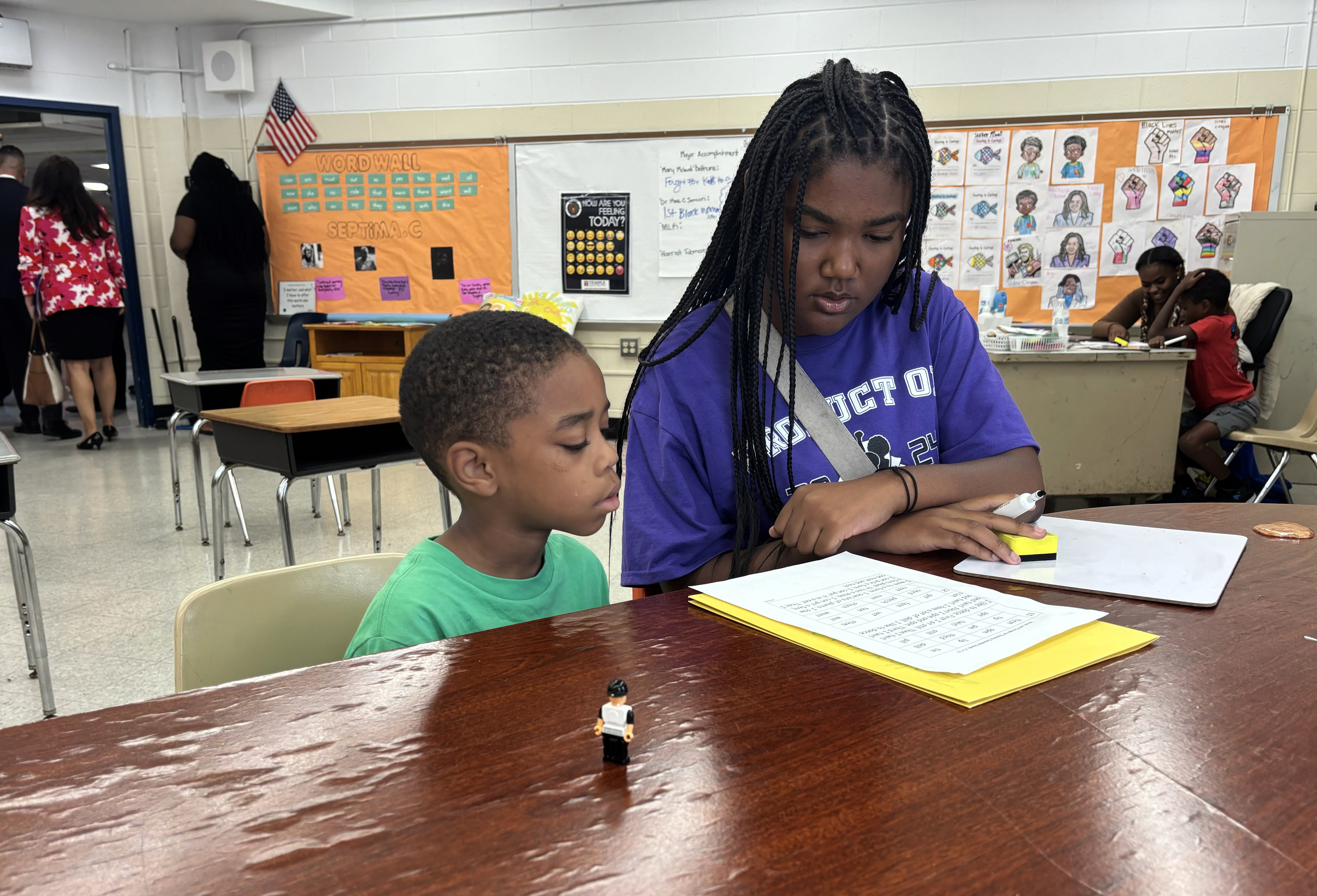Report on New Jersey’s Legislative Advancements in Early Childhood Education and Alignment with Sustainable Development Goals
On July 9, Governor Phil Murphy signed new legislation in New Jersey, marking a significant commitment to advancing the United Nations’ Sustainable Development Goals (SDGs), particularly SDG 4 (Quality Education). This report analyzes the new laws mandating free, full-day kindergarten and expanding universal preschool, examining their framework, intended impact, and challenges in the context of sustainable development.
Advancing SDG 4: Quality Education
The core of the new legislation directly addresses SDG Target 4.2: “By 2030, ensure that all girls and boys have access to quality early childhood development, care and pre-primary education so that they are ready for primary education.”
Mandatory Full-Day Kindergarten
The state has mandated the provision of free, full-day kindergarten in all public schools, establishing a clear pathway to achieving universal access to foundational education.
- Implementation Timeline: All school districts are required to establish a full-day kindergarten program by the 2029-2030 school year.
- Compliance Flexibility: Districts unable to meet the deadline independently can enter into send-receive agreements with neighboring districts, fostering inter-district cooperation in line with SDG 17 (Partnerships for the Goals).
Universal Preschool Expansion
The legislation codifies the Murphy administration’s ongoing efforts to provide universal, high-quality preschool for all 3- and 4-year-old children, a critical step for long-term academic success and lifelong learning.
- Financial Commitment: The state has invested an additional $600 million over seven years, bringing total spending to sustain preschool programming to $1.2 billion.
- Program Growth: Since the administration’s first year, 229 of the state’s 590 school districts have been incorporated into the free preschool program.
- Legal Framework: The state’s preschool funding formula is now codified into law, providing a stable and predictable financial structure to support this expansion.
Broader Implications for Sustainable Development
Beyond SDG 4, the educational reforms have significant potential impacts on several other Sustainable Development Goals, including reducing poverty and inequality.
SDG 1 (No Poverty) and SDG 10 (Reduced Inequalities)
By providing free early childhood education, the state aims to mitigate educational disparities and reduce financial burdens on families.
- Foundation for Achievement: Research indicates that high-quality early education is a key driver of academic achievement, which can help break intergenerational cycles of poverty (SDG 1).
- Reducing Outcome Disparities: Universal access is intended to reduce inequalities of outcome by ensuring all children, regardless of socioeconomic background, have a strong start to their academic careers (SDG 10).
SDG 5 (Gender Equality) and SDG 8 (Decent Work and Economic Growth)
The provision of free, full-day early education services supports broader economic and social goals.
- Supporting Workforce Participation: Free childcare and education can enable more parents, particularly women, to enter or remain in the workforce, contributing to gender equality (SDG 5) and economic growth (SDG 8).
- Building Human Capital: A well-educated populace is essential for a productive and innovative economy, aligning with the objectives of SDG 8.
Implementation Framework and Challenges
The legislation outlines specific mechanisms for implementation but also raises concerns regarding equitable execution, a key component of SDG 10.
Partnerships and Contracts (SDG 17)
The law encourages collaboration between public and private sectors. School boards are now permitted to grant preschool contracts to private providers for terms of up to three years, a move designed to expand capacity and leverage existing community resources.
Concerns Regarding Equitable Implementation (SDG 10)
Advocacy groups, notably the Education Law Center, have raised critical concerns that the new funding model could inadvertently exacerbate inequalities.
- Shift in Funding Model: The law introduces a framework for a cost-sharing model between state and local revenue, moving away from a system where low-income districts received full state funding for pre-K. A three-year pilot program will test this new model.
- Risk to Low-Income Districts: There is a concern that requiring local revenue contributions could hinder program expansion in low-income districts, while wealthier districts continue to benefit. This could undermine the goal of reducing inequalities (SDG 10).
- Existing Disparities: Data from the Education Law Center indicates that as of June, approximately 9,000 eligible students in low-income districts were not enrolled in free pre-K, while over 24,000 seats were funded in wealthier districts. The center advocates for addressing these existing capacity and participation gaps before pursuing universal expansion under the new model.
1. Which SDGs are addressed or connected to the issues highlighted in the article?
SDG 4: Quality Education
- The article’s central theme is the expansion of early childhood education in New Jersey. The new law making “free, full-day kindergarten” mandatory and the administration’s goal to provide “universal, high-quality pre-K” directly contribute to ensuring inclusive and equitable quality education. The article emphasizes that access to these programs is critical for children’s academic careers, fostering literacy and social development.
SDG 10: Reduced Inequalities
- The article discusses the potential socio-economic impact of the new education law, particularly on different income groups. The Education Law Center raises concerns that the new funding model could disadvantage low-income districts while benefiting wealthier ones. This highlights the challenge of reducing inequalities within and among communities, as the article notes the new law “is creating more obstacles for some districts and not sufficiently targeting expansion among the kids in the state who most need that early childhood experience.”
2. What specific targets under those SDGs can be identified based on the article’s content?
SDG 4: Quality Education
-
Target 4.2: “By 2030, ensure that all girls and boys have access to quality early childhood development, care and pre-primary education so that they are ready for primary education.”
Explanation: The article directly addresses this target through New Jersey’s new law. The stated goal is to provide “universal, high-quality pre-K” and make “full-day kindergarten in all public schools… free by the 2029-2030 school year.” This initiative is designed to ensure all children, specifically those aged 3 and 4, have access to pre-primary education to prepare them for subsequent schooling.
SDG 10: Reduced Inequalities
-
Target 10.2: “By 2030, empower and promote the social, economic and political inclusion of all, irrespective of age, sex, disability, race, ethnicity, origin, religion or economic or other status.”
Explanation: The article’s discussion about the funding formula’s impact on low-income versus wealthier districts relates to this target. The concern that the new pilot program could result in “low-income districts [being] underserved while wealthier districts continue to benefit” points to the challenge of ensuring equal access and opportunity regardless of economic status. The debate focuses on whether the policy will reduce or exacerbate existing inequalities in educational access.
3. Are there any indicators mentioned or implied in the article that can be used to measure progress towards the identified targets?
Indicators for Target 4.2 (Quality Education)
-
Participation Rate in Organized Learning: The article provides several data points that can serve as indicators for measuring participation.
- The goal of achieving universal access by the “2029-2030 school year” sets a clear timeline for measurement.
- The current progress is quantified: “229 of the state’s 590 school districts have been added to the free preschool program.”
- The article identifies a specific gap in enrollment: “9,000 students in low-income districts eligible for free pre-K were still not enrolled in June.” This number can be tracked over time to measure progress.
- The expansion in wealthier districts is also quantified: “the state has funded over 24,000 seats in about 150 wealthier districts.”
Indicators for Target 10.2 (Reduced Inequalities)
- Disparity in Enrollment by Income Level: The article implies this as a key indicator by contrasting the “9,000 students in low-income districts” who are not enrolled with the “24,000 seats” funded in wealthier districts. Tracking the enrollment rates across districts of varying income levels would measure progress toward equitable access.
- Funding Allocation and Equity: The change in the funding model to a “system in which the state and local revenue share the cost” is a policy indicator. The article suggests monitoring the impact of this three-year pilot program to see if it leads to low-income districts being “underserved.” The outcome of this pilot will indicate whether the policy is reducing or increasing inequality.
4. Table of SDGs, Targets, and Indicators
| SDGs | Targets | Indicators |
|---|---|---|
| SDG 4: Quality Education | 4.2: By 2030, ensure that all girls and boys have access to quality early childhood development, care and pre-primary education. |
|
| SDG 10: Reduced Inequalities | 10.2: By 2030, empower and promote the social, economic and political inclusion of all, irrespective of economic or other status. |
|
Source: news.yahoo.com







